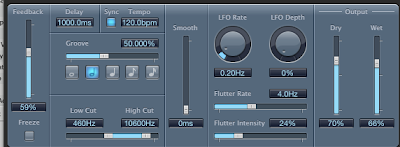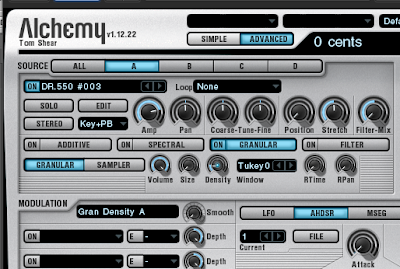 Product: Plasticlicks Drum Sample Library
Product: Plasticlicks Drum Sample Library
Manufacturer: D16 Group
Format: WAV, Akai S5000/6000, and Sound Fonts (SF2)
Support:http://www.d16.pl/forum
Price: €69
Demo: Sound examples and small selection of free demo sounds available here.Polish software developers have gained quite a reputation for creating unique effects plug-ins and authentic-sounding emulations of a few classic Roland drum machines. So it was a bit surprising to learn that their new product was a sample library. Does it live up to the quality of their previous products? Read on...
Plasticlicks is a collection of 1,500 electronic drum samples in WAV, SF2, and Akai S5000/6000 formats. Each sound is provided at 4 different velocity levels for more expression. What is the point of sampling electronic sounds at several velocity levels, you may ask? Instead of each sound simply being a progressively louder version of the one that came before it, these appear to be slightly tweaked so that the sounds more closely emulate the way an acoustic drum sound might react when struck harder (slight pitch/brightness/"thwack" variations). I say "appear" because there isn't a lot of info included about how the library was produced. That info might be interesting... what equipment was used, how were the sounds processed and created? Then again, maybe only geeks like me care about stuff like that.
The sounds are all organized logically into folders named Claps, Closed Hihats, Cowbells (in case you have the fever), FX Hihats, Hits (which are mainly bursts of white noise and not melodic/chord hits like you might expect), Kicks, Metal Percussion, Mini Percussion, Open Hihats, Percussion, SFX, Shakers, Snare Drums, Snare Drum Substitutes, Synthetic Percussion, and Tambourines. The SF2 files are obviously self-contained, but the WAV files are all listed with the intended velocity levels listed next to them if you want to map them yourself. And unfortunately, you may want to do that. For some odd reason, instead of organizing these into 'sound menus'/kits where each key has a different sound mapped to it the included mappings consist only of a single sound, sampled at 4 different velocity levels spread across the entire keyboard. I guess the idea here is that you can play with the sounds across a greater range to find the perfect fit for your track, but even most amateurs know how to adjust the pitch of a sample in their sampler of choice, so the logic behind this is a bit difficult to understand.
What's worse is, this is
horrible for the workflow in the studio. Trying to find a specific sound turns into a tedious, needlessly long process of loading in instrument after instrument instead of just searching for the sound you want by hitting different keys in a smaller number of mapped instruments. Not only that, but it makes the process of programming a beat less efficient when each sound is its own instrument. This might be alright for grid-style programming, but if you're like me and you like to program your rhythms by playing the parts, it's not very convenient. There is a good reason that most drum sample libraries are mapped into these 'sound menus'. I think it would be fine for them to make the option of single sound mappings to be available in case anyone enjoys this, but I have to be honest, for my way of working in the studio, the current mappings would probably send me looking for sounds in a different library with a more logical mapping set-up. Time is of the essence in the studio, especially for professionals and I think these tiny mappings make the process of finding a sound unnecessarily inefficient.
That said, what about the sounds themselves? They're quite good, actually. The sounds are uncompromisingly analog-sounding, not unlike some of the recent releases from Wave Alchemy. The kicks have lots of punch, the snares are crisp and snappy, and the hats are bright and clear. The multiple velocity levels are more noticeable on some sounds than others, but can add a very subtle, but effect liveliness when they work well. Like many synthetic drum collections, most of these would be more appropriate for lighter styles of music such as minimal (the most obvious match genre-wise if you have to pigeonhole it), synth-pop, Berlin school, etc. Don't get me wrong, the sounds have plenty of punch and presence, but if you're looking for speaker-destroying gabba kicks, this isn't the library for you.
So, overall, we have a mixed bag here. In terms of the sound quality, it's hard to fault this collection. The samples are well recorded and produced and sound great. A little more variety would be nice (to my ears, most of the sounds sounded as if they were created on the same synth), but there's a lot of good material here. Unfortunately, the current mappings make it extremely impractical to audition sounds quickly and efficiently. If these consisted of single velocity samples, mapping them into your own sound menus wouldn't be a big deal, but when you multiply 4 velocity mappings across 63 or so keys, that gets a bit time-consuming. So, in the interest of fairness, I have to split the score here into two scores: Quality & Variety of Sounds: 8/10, Usability/Practicality in the Studio 5/10. If D16 took the time to organize their mappings in a more practical way, the usefulness of this library would be much higher. But only if that won't further delay the release of Sh101ter. ; )

















































